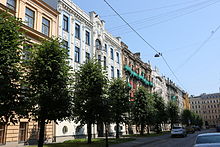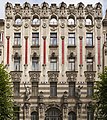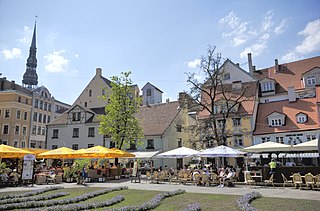
Riga is the capital and largest city of Latvia and is home to 605,802 inhabitants which is a third of Latvia's population. The city lies on the Gulf of Riga at the mouth of the Daugava river where it meets the Baltic Sea. Riga's territory covers 307.17 km2 (118.60 sq mi) and lies 1–10 m (3.3–32.8 ft) above sea level, on a flat and sandy plain.
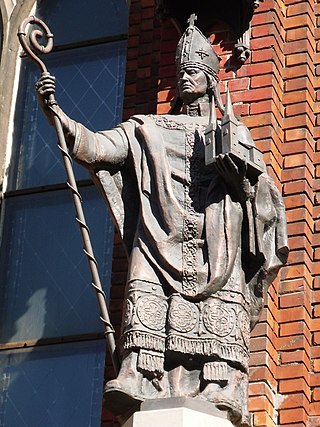
Albert of Riga or Albert of Livonia or Albrecht was the third Bishop of Riga in Livonia. In 1201 he allegedly founded Riga, the modern capital of Latvia, and built the city's cathedral in 1221.

Mikhail Osipovich Eisenstein was a civil engineer and architect working in Riga, the present-day capital of Latvia, when the city was part of the Russian Empire. He was active as an architect in the city at a time of great economic expansion and consequent enlargement, which coincided with the flourishing of Art Nouveau architecture. During the years 1901–1906, Eisenstein designed many of the best-known Art Nouveau buildings of Riga. His son, Sergei Eisenstein, became a well-known Soviet film director.
Jacques Rosenbaum was an Estonian architect of Baltic German descent. Between 1904–07 he served as municipal architect of Tartu, Estonia, and is best known for his Art Nouveau buildings in Tallinn.

Riga Central Station is the main railway station in Riga, Latvia. It is known as the main point of Riga due to its central location, and most forms of public transport stop in this area. Part of the building is a shopping centre.

Wilhelm Ludwig Nikolai Bockslaff was a Baltic German architect working in Riga. He is considered one of the most important representatives of Eclecticism, Neo-Gothic and Art Nouveau styles in the city. He is noted in particular for his construction of churches.

Eižens Laube was a Latvian architect. He was responsible for some of the reconstruction work of Riga Castle in the 1930s and designed more than 200 houses in Riga.
Karl Johann Felsko was an architect and son of chief architect of Riga Johann Daniel Felsko. He was one of the leading architects during the building boom in Riga in the late 19th and early 20th century. There were more than 115 multi-story apartment and public buildings, factories and other buildings built following his designs. He was a master of Eclecticism style. His work, primarily seen in apartment buildings in Riga, included carefully placed filigree elements of order, cornices, pediments, garlands, cartouches, herms and more. His productivity decreased a great deal at the beginning of the 20th century with the introduction of Art Nouveau.
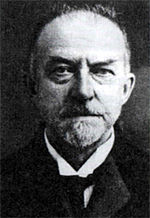
Konstantīns Pēkšēns is one of the most prominent Latvian architects of all times. After Jānis Baumanis he is the epitome of the second generation of Latvian architects. Many Latvian cities and towns take pride in buildings designed by Pēkšēns, but Riga alone can boast more than 250 multi-storey brick buildings and a great number of wooden houses erected following his designs.

Heinrich Karl Scheel was a Baltic German architect who lived and worked in Riga, Latvia. He is considered one of the greatest 19th century Riga architects and has designed more than 40 public and private buildings there.

The Art Nouveau architecture in Riga makes up roughly one third of all the buildings in the centre of Riga, making Latvia's capital the city with the highest concentration of Art Nouveau architecture anywhere in the world. Built during a period of rapid economic growth, most of Riga's Art Nouveau buildings date from between 1904 and 1914. The style is most commonly represented in multi-storey apartment buildings. Stylistic influences derived not least from present-day Austria, Finland and Germany, while the establishment of a faculty of architecture in Riga in 1869 was instrumental in providing a local cadre of architects. This included, but was not limited to, some of the first formally trained ethnic Latvian architects. As elsewhere, the Art Nouveau movement in Riga was driven by a desire to express greater individuality, local attachment and a more rational kind of architecture than that which had dominated during the 19th century. Stylistically, the Art Nouveau architecture of Riga can be further divided into four different stages: Eclectic, Perpendicular, National Romantic; and Neo-Classical.
Paul Mandelstamm was a Baltic German-Jewish architect, working mainly in present-day Latvia.
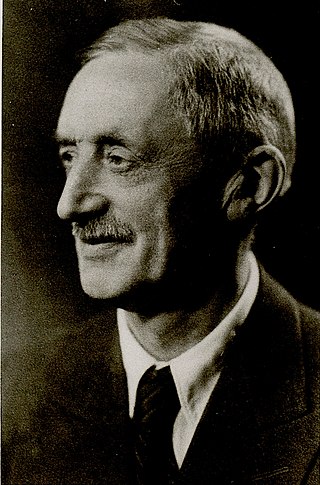
Bernhard Max August Bielenstein was a Baltic German architect.
Rudolph Dohnberg was a Baltic German architect.
Aleksandrs Vanags was a Latvian architect.

Augusts Malvess was a Latvian architect.

Edmund von Trompowsky was a Baltic German architect working mainly in present-day Latvia.

Brīvības iela is the central street of Riga, the capital of Latvia. It is more than 12 km long, going through all of Riga from the historical centre to the outskirts.

Kaļķu iela is a street in the medieval old town of Riga, Latvia. The street begins at the central square Rātslaukums and goes to the North East as far as the boundary of the historical centre. Brīvības iela and Brīvības bulvāris form a continuation of Kaļķu iela.

August Volz was a German sculptor. Born in Magdeburg, Volz worked mainly in Riga, the present-day capital of Latvia. The workshop of Volz received prestigious commissions in Riga from its opening in 1876 and created several of the most well-known sculptures of the city, for example the Roland statue and sculptures decorating the House of the Blackheads. The firm of Volz was also responsible for the complete or partial decoration of a number of important public buildings in the city.
